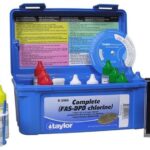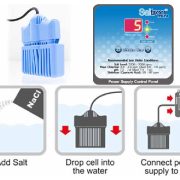
The Link Between Swimming Pool pH and Alkalinity: A Guide for New Pool Owners
Understanding the Importance of pH and Alkalinity Balance in Your Swimming Pool
Introduction
As a new pool owner, it is essential to understand the importance of maintaining proper water chemistry to ensure a clean, safe, and enjoyable swimming environment. Two critical aspects of pool water chemistry are pH and alkalinity. In this article, we will explore the link between swimming pool pH and alkalinity and provide guidelines on how to maintain an ideal balance.
pH and Alkalinity Explained
- pH: The pH level of your pool water measures how acidic or alkaline it is on a scale of 0 to 14, with 7 being neutral. A pH level below 7 indicates acidic water, while a pH level above 7 indicates alkaline water. The ideal pH range for swimming pool water is between 7.2 and 7.6.
- Alkalinity: Alkalinity, also known as total alkalinity, refers to the concentration of alkaline substances in your pool water, primarily bicarbonates, carbonates, and hydroxides. These substances act as a buffer, helping to stabilize the pH level and resist sudden fluctuations. The recommended alkalinity range for swimming pool water is between 80 and 120 parts per million (ppm).
The Link Between pH and Alkalinity
pH and alkalinity are closely linked, as alkalinity acts as a buffer to stabilize the pH level in your pool. When the alkalinity level is within the recommended range, it helps prevent significant pH fluctuations caused by factors such as rain, swimmers, or pool chemicals. On the other hand, if the alkalinity is too low, the pH level becomes unstable and prone to drastic changes, which can lead to various problems, including:
- Corrosion of pool equipment
- Staining of pool surfaces
- Eye and skin irritation for swimmers
- Reduced effectiveness of sanitizers
Similarly, if the alkalinity is too high, it can cause:
- Cloudy water
- Scaling and staining of pool surfaces
- Reduced sanitizer effectiveness
Maintaining a Balanced pH and Alkalinity
To maintain a balanced pH and alkalinity in your swimming pool, follow these guidelines:
- Test Regularly: Regularly test your pool water, at least once a week, using a reliable test kit or test strips. Check both the pH and alkalinity levels to ensure they are within the recommended ranges.
- Adjust Alkalinity First: If your alkalinity is outside the recommended range, address it before adjusting the pH. To increase alkalinity, add a product like sodium bicarbonate (baking soda). To decrease alkalinity, add an acid like muriatic acid or sodium bisulfate.
- Adjust pH: Once the alkalinity is balanced, you can adjust the pH level if necessary. To raise the pH, use a pH increaser like soda ash or borax. To lower the pH, use a pH decreaser like muriatic acid or sodium bisulfate.
- Re-test and Repeat: After adjusting the alkalinity and pH, allow the pool water to circulate for several hours, then re-test the water. If needed, repeat the adjustment process until both levels are within the recommended ranges.
Conclusion
Understanding the link between swimming pool pH and alkalinity is crucial for maintaining a clean, safe, and enjoyable swimming environment. By regularly testing and adjusting your pool water’s pH and alkalinity levels, you can prevent common pool problems and protect both your pool equipment and swimmers’ health. With a little knowledge and regular maintenance, you can keep your pool in optimal condition and enjoy a refreshing swim all season long.




